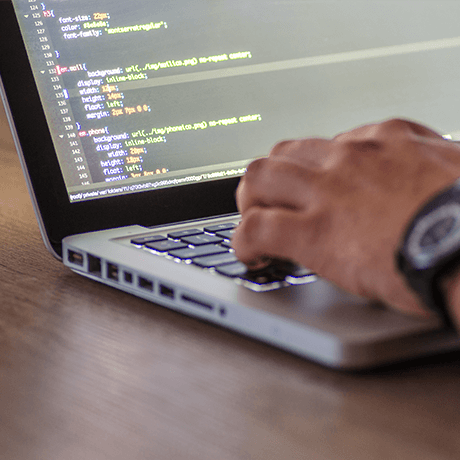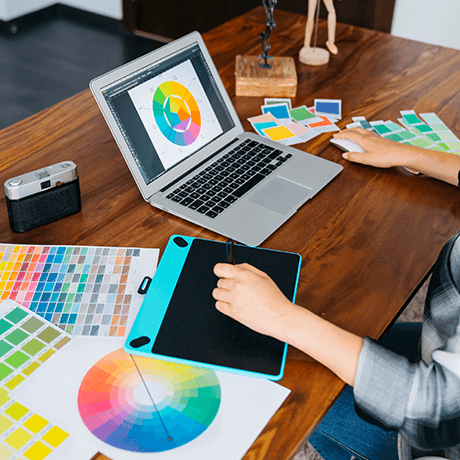
Eight Web Development Trends Coming In 2018
November 17th, 2017 Posted by BIomimicry Web Design and Development 0 thoughts on “Eight Web Development Trends Coming In 2018”Since its inception, the web has consistently evolved. The early days of Mosaic and Netscape Navigator helped popularize the internet and, since then, each and every year has brought new concepts, ideas and trends — some good and some bad.
One important lesson learned from all of those years of changes and trends is that being successful is often related to riding the wave of change rather than following in its wake. You can do that by exploring the trends of tomorrow and then looking to incorporate those that are applicable to you before everyone else does.
Here are eight web development trends that should have the largest overall impact on the industry in 2018:
Improved Online Support
Being connected to users is more important than ever. Chatbots, those computer programs which have conversations with us either via text or auditory method, allow a website to have a 24/7 contact point without maintaining a 24-hour customer service department. The evolution of Chatbots has led to things like answering common questions, directing people to information and pages or even how to complete a transaction. As consumers become more comfortable with the idea of a chatbot along with how to interact with them, the expectations for every site having them will increase.
Progressive Web Apps
A recent study about mobile usage found that mobile apps account for 89% of total mobile media time. It makes sense then that utilizing a similar format to mobile apps would be well-received by target audiences.
Progressive web apps are web applications that can appear to users like a mobile application but are truly web pages or websites. They take advantage of the host of features on web browsers but deliver an app-like user experience. There are numerous advantages to this technology such as the ability to work offline, near-instant loading (as much of the information is stored in the cache), reliability and the ability to receive push notifications. They can be built in less time, work for any user and are generally easier to deploy and maintain, all of which are beneficial to developers and consumers alike.
Push Notification With Websites
One of the most powerful tools that a mobile app has is push notifications. The ability to send direct information to a user who provides value has proven to be extremely popular with everything from traffic changes, sports scores or notifications about sales. This type of communication works on websites as well once a user enables push notifications. The benefits are higher engagement without the additional cost of creating a mobile app to replace a website.
Single-Page Websites
The single-page website trend found its footing this year and should continue to become more common. This design is one long webpage. Navigation is based on scrolling or using links that jump up or down the page to that particular section.
The biggest advantage of this type of website is simplicity. There is no complex navigation or deep menu to traverse. And the design works well on mobile devices, where scrolling is a common navigation method. This style provides a modern solution to simple online needs and is inexpensive to develop and host.
Static Websites
A static website is very basic. Each page is simply coded using HTML and displays the same fixed or static content to every user. Why would people want to effectively take a step or three backward in regards to web technology and options? Simplicity.
These websites are safe, load quickly and can be cheaply made. Static websites should see a resurgence in use for cost-conscious projects, as they are miles ahead of the original static websites from the web’s infancy, but not nearly as dull or labor-intensive to create.
Motion User Interface
Interface has been a top concern for developers for years. Even the best-looking design can be rather pointless if you can’t find the information you need. Originally designed for mobile apps, a mobile user interface allows for the use of animations and transitions to help alert users to actions or important components, along with adding life and style to a project.
This technology offers a high degree of customization, which then allows a developer many options to craft a highly functional and stunning site. Some examples of motion would be easing in, overlay, cloning, obscuration, parallax, parenting, dimensionality and offset-delay.
Phasing Out Flash
Flash was a very exciting component for websites allowing animation and other motion aspects. While it was commonly used for years, it is now something that everyone should look to phase out. Adobe announced this year that the Flash Player will no longer be updated or distributed after 2020. Additionally, it is incompatible with most types of mobile devices. Rather than losing out on web traffic, especially on your mobile site, you should replace any Flash with HTML5, which is quickly becoming the most common, universal format on the web.
Photo Content
The value of a good photo has never been higher in web development, primarily because a good photo can help spur conversions. This concept is not a new one as during the heyday of print magazines, great product photos were in high demand to help create conversions simply based on the story an image told. Unique pictures and photos that show individuality while conveying information will be an important key to online success in 2018.
The bottom line is that trends will come and go, spurred by the evolution of our technology. These developments can be utilized to both entice and engage new and existing users when applied optimally. That is why it is important to look to the future now for ideas and inspiration so that you can stay ahead of the competition.
Credits:
Author: Ken Braun



